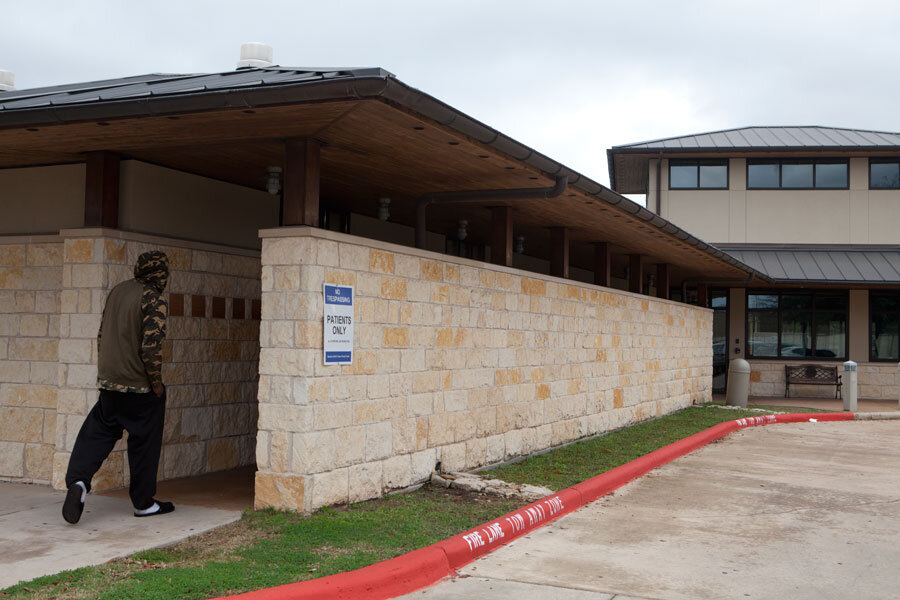Why abortion clinics are shutting down across the US
Loading...
Abortion clinics in the US are closing more rapidly than ever before – and preventative laws may not be to blame.
Next week, the Supreme Court will examine the legality of some of those laws, known collectively as Targeted Regulation of Abortion Provider laws, or TRAP laws. In Whole Woman’s Health v. Hellerstedt, the Court will examine if laws that make abortions more difficult to attain are unconstitutional efforts to chip away at the Supreme Court's 1973 ruling in Roe v. Wade – or if they are simply an example of federalism at work.
But regardless of the Court's ruling, abortion may be on the decline in the US for reasons that have nothing to do with TRAP laws.
In the past five years, 162 abortion providers have closed their doors and only 21 have opened, a recent Bloomberg study reports. In this same period, states enacted more than 200 new abortion restrictions – more than the previous 10 years combined, according to a 2014 report from the Guttmacher Institute, a reproductive health research institute.
As of 2014, “More than half of US women of reproductive age live in states that are hostile or extremely hostile to abortion rights,” says the report, defining hostility as at least four state-sanctioned abortion restrictions and extreme hostility as six or more such restrictions.
So are TRAP laws responsible for the plunging number of abortions?
Not necessarily. Almost 40 of the 162 providers, or roughly 25 percent of all closed clinics, shut down due to business or financial reasons. In other words, the demand just wasn’t there.
According to an Associated Press survey released last year, the number of abortions performed has decreased by 12 percent nationwide since 2010. This drastic decrease is easily explainable, say abortion rights activists: women are deterred from receiving an abortion if they have to pay too much or drive too far to a clinic. Thus, the more TRAP laws, the fewer abortions.
But a closer examination of the data paints a more nuanced picture.
Abortions have declined in almost every state since 2010, regardless of the number of TRAP laws in the state. In fact, five of the six states with the biggest abortion declines (Hawaii, New Mexico, Nevada, Rhode Island and Connecticut) have passed no recent laws to restrict abortion.
Americans United for Life, the pro-life organization represented in the upcoming Supreme Court case, recently recognized Louisiana as the No. 1 state working to reduce access to abortion through legislation. But the AP survey found that Louisiana had seen the second-largest increase in statewide abortions, at almost 12 percent.
Some abortion rights advocates are using this data to support their anti-TRAP argument.
Judy Tabar, chief executive of Planned Parenthood of Southern New England, attributes the abortion decline to accessible birth control and sex education programs. These states prove that TRAP laws don’t need to compromise Roe v. Wade in order to decrease abortion rates across the US, she told the AP.
TRAP laws very by state. Some states are granting hospitals absolute veto power over whether an abortion provider can practice. Others mandate that abortion providers must have an affiliation with a local hospital – a relationship that anti-abortion hospitals refuse to engage in. Some laws mandate two or three-day waiting periods for patients, limit nonsurgical drug-induced abortions, or effectively put clinics out of business by requiring that procedure rooms be a particular size or width.
In their Supreme Court brief filed Tuesday, the plaintiffs, a group of Texas abortion providers, argue that the TRAP laws at issue "would force dozens of facilities with a long history of providing safe abortions to close, eroding abortion access and putting women throughout Texas at risk of harm."
The respondents, Texas state officials, counter that the laws seek only "to ensure patient safety and raise standards of care, which are legitimate state interests."
Arguments in the case will take place on March 2, and the Court will rule before summer.








